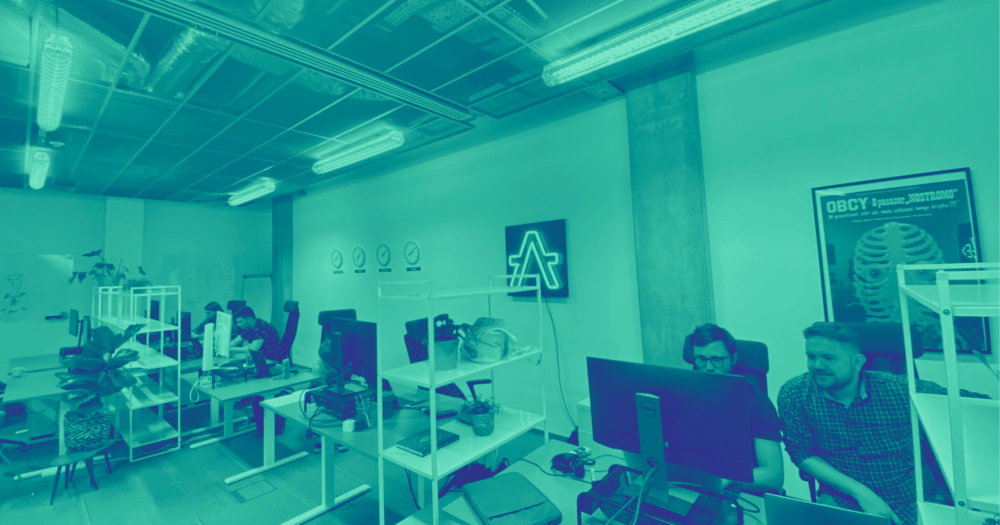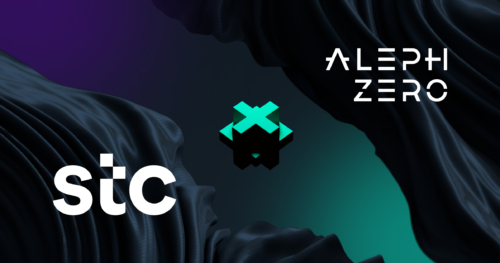Synergies Between Blockchain and Decentralized Workforce
Jun 24, 2021

The adoption of decentralized workforce practices is a reflection of our increasingly diversified world and mirrors blockchain’s goals.
The concept of a distributed workforce has gained speed in the wake of the COVID-19 pandemic as it forced businesses to rethink their current work model. This change is similar to the positive disruptive effect blockchain had on decentralizing finance in the past few years. Over the past year, almost everyone besides essential workers began working from home. We had to learn how to interact with our colleagues through Zoom, Microsoft Teams, or Slack. The events of the past year changed the way we view employment and provoked countless discussions on what the future will bring to our professional lives. When discussing a decentralized workforce, it is essential to note a significant difference between two terms: “remote work” and “decentralized workforce.”
In remote work, the employee operates outside of a central office. In contrast, a decentralized workforce means the entire company decided to refrain from possessing a central hub. It adopts a new model to cope with the challenges. Many companies have spent the last few years developing the concept of a decentralized workforce; some of the most notable are: IOHK, Automattic, GitHub, InVision, DuckDuckGo, or Buffer.
9 to 5 Had Its 5 Minutes
The XXI century brought about a new social contract between employers and employees. Young people entering the workforce want to feel that they have an impact, they want to feel respected, and, most of all, they want a degree of flexibility that until now was unheard of. More so than their parents, young people are chasing the elusive “work/life balance” ideal while still caring for the company they work at. Tamara Haasen, the chief of staff at IOHK, a research and development company working in the field of blockchain cryptography, has been quoted as saying, “We are also exploring new organizational models for the next stage where we can encourage a culture of transparency, with meritocratic rewards based on culture, individual ownership and collaboration. The aim is to ensure IOHK becomes an organization that is owned by its employees and everyone has a stake in its future growth.”
What are the Advantages of a Decentralized Workforce?
There are numerous benefits to adopting decentralized workforce practices. Let’s explore some of the most prominent ones:
- End of the morning commute. Employees praise that they can do without the dreaded morning trip to work. This allows them to be better rested. It also has the benefit of minimizing the carbon footprint. A study done by the Texas A&M Transportation Institute found that the average American spends about 54 hours yearly stuck in traffic while driving to work. The environmental impact would also be noticeable. Many metropolises the world over have observed cleaner skies throughout the pandemic due to fewer people commuting. This improved air quality could become a permanent state if we adopt remote work practices post-pandemic. Global Workplace Analytics published a study that stated that the United States can reduce greenhouse gas emissions by 51 million metric tons if the countries workforce worked remotely half the time.
- Productivity surprisingly increases. One of the biggest fears employers face when considering remote work options is the belief that workers who work from home will be slacking off. A 2014 study done by the Stanford Graduate School of Business discovered that employees who work from home are 13% more productive than those who work from the office.
…Everyone Benefits
- Savings for everyone. Studies show that remote work has been beneficial for employees and employers as far as saving money goes. The average employee saves between $2,000 to $6,500 yearly on gasoline and daycare by working at home. Employers, on the other hand, can refrain from renting costly office space.
- Job satisfaction. A study conducted by the University of Connecticut found that remote work increases employee job satisfaction. The numerous comforts and stress-free environment contribute to employee well-being. Interestingly, the study’s findings show that employee satisfaction increases for every hour of work done remotely and stops growing once they cross the 15-hour threshold. Also worthy of note is that employees who find the most satisfaction in remote work are those with some experience. The study found that employees starting in their roles get frustrated quickly if the work model forces them to use electronic forms of communication to receive feedback, tips, and instructions.
How to Get the Most Out of a Decentralized Workforce?
Now that we’ve gone over some of the advantages of leading a decentralized workforce, let’s look at some ideas for maintaining morale and momentum towards achieving company targets. When building a decentralized workforce, it is crucial to smooth the way for contact between employees. These community-building methods include less formal ones and those that are closer in spirit to traditional office meetings. One of the techniques used to maintain a sense of community is the virtual morning coffee. Employees are randomly paired with another worker (who may be across the globe) to chat outside work-related meetings. Gaining in popularity are flexible schedules, where employees are allowed to work according to their timetable. This will enable workers to dedicate time to other responsibilities, such as family or studies, while also allowing them to work when they feel most productive.
Building Team Spirit
Other techniques for maintaining dialogue in the company are launching a newsletter dedicated to sharing miscellanea. These can include topics such as favorite podcasts, recipes to try, etc. Some companies open intranet threads devoted to topics that are anything but work-related. At the same time, others provide the possibility to chat with HR specialists just for the sake of human connection. Also worthy of note is that IOHK encourages maintaining a work/life balance by asking workers to turn off notifications. Employees shouldn’t fear logging off once they finished their tasks. Róża Szafranek, the CEO at HR Hints, has this to say about decentralized workforces,
When it comes to a decentralized companies’ organizational culture, we noticed that a lack of common spaces reduces gossiping. Working with startups and fast-growing tech companies, we can often see that random physical spaces trigger “water cooler” conversations. During these chats, employees talk about the office’s day-to-day happenings. A common problem in growing organizations is that they make many important decisions in these unofficial spaces. The result of these practices is the exclusion of people who should be a part of the decision process. To help build new relations between employees, organize virtual coffee meet-ups with random colleagues. This is helpful because spontaneous meetings don’t support the same configurations of people.
Another approach towards maintaining employee morale offers Automattic, the company responsible for WordPress. The company provides a 2,000 USD stipend to employees to decorate their home-office workplace and supplies workers with the newest computers and tech. The results employees achieve recoup the cost of these perks. A distributed, international business setup also has the advantage of accessing a talent pool they would never have access to otherwise.
Empires on Which the Sun Never Sets
Buffer, a social media management company, has remote workers scattered across the world. This allows them to offer quick and effective customer service no matter the time zone. Working across multiple time zones brings along many challenges that need to be addressed. Synchronous work is a habit that is hard to break. Many employees feel pressured to be online to communicate with teammates in different time zones, even when they should be enjoying their free time. To combat this, Buffer has begun using a tool called Discourse, which facilitates asynchronous work schedules.
Think Horizontally
The structure of companies that adopt a distributed workforce model frequently undergoes a dramatic change. Systems that traditionally are vertical become horizontal, allowing for a less stressful atmosphere and fostering a sense of partnership. DuckDuckGo prides itself on its mentorship program that helps build bonds between more experienced workers and those who are just beginning their journey.
IOHK has some radical ideas about approaching salaries by allowing collective consensus to establish salary figures. They consider numerous factors, such as experience, age, geographical location, the market value of the employee, etc. The figures decided upon are transparent. The company also plans to make career paths public knowledge to make employees aware of their growth potential.
How Can Blockchain Help?
Two use cases where blockchain technology can assist in creating a better environment for both companies and employees engaged in the decentralized workforce is to make credentialing easier as well as to protect employees from being taken advantage of.
One of the biggest problems employers deal with during the recruitment process is candidates giving false information on their CVs. This leads to some glaring problems. There is potential for blockchain to offer a solution to this HR nightmare. The technology makes use of transparent, immutable ledgers that can be used to store data on candidates and be used as an archive for their whole employment history. ZINC is a company that has been exploring blockchain-based verification methods. They use the technology to store personal information in a secure environment. This allows prospective employers to access the best talent while at the same time being sure that all information declared by the candidate is verified and fact-checked. The protocols used by ZINC also ensure that the candidate’s data is also secure and not subject to any misuse by employers.
Another use case for blockchain in decentralized workforces is the protection of employee rights. Working from home has resulted in many employees working longer than the standard 8-hour workday. The platform Gigachain has a solution that uses blockchain. They use the technology to monitor the amount of work done by employees and store it securely. Access to the information is available to the workers, employers, and, if need be, to auditors or oversight bodies. There are many other use cases for blockchain to modernize the workforce, but we’ll look at them in a future article…
Bringing Balance to the (Work)Force
The Covid-19 pandemic has accelerated the acceptance of a decentralized workforce. It forced companies who would never consider it in the past to give it a try. Many have found that their performance has not deteriorated over the past year and even noticed the many advantages that come with the territory. As we slowly return to the office, most employees hope that a hybrid work system becomes the new normal, allowing for the best of both worlds to function. This, of course, carries certain risks Róża Szafranek maintains that to create effective communication in hybrid setups, companies must “promote equality during online conversations by giving everyone space as well as a chance to speak. No matter how many people are in the office, we must avoid this ‘group vs. individuals’ situation during online calls.”
One of the big takeaways from the past year on the benefit of adopting decentralized workforce strategies can be best summed up by Tamara Haasen, “… people are judged solely on skills, circumstances, and performance – so what they get out is in direct proportion to what they put in. A decentralized organization is a truly meritocratic one.”
What are your thoughts on decentralized workforces? Do you think they will become part of the “new normal”?


